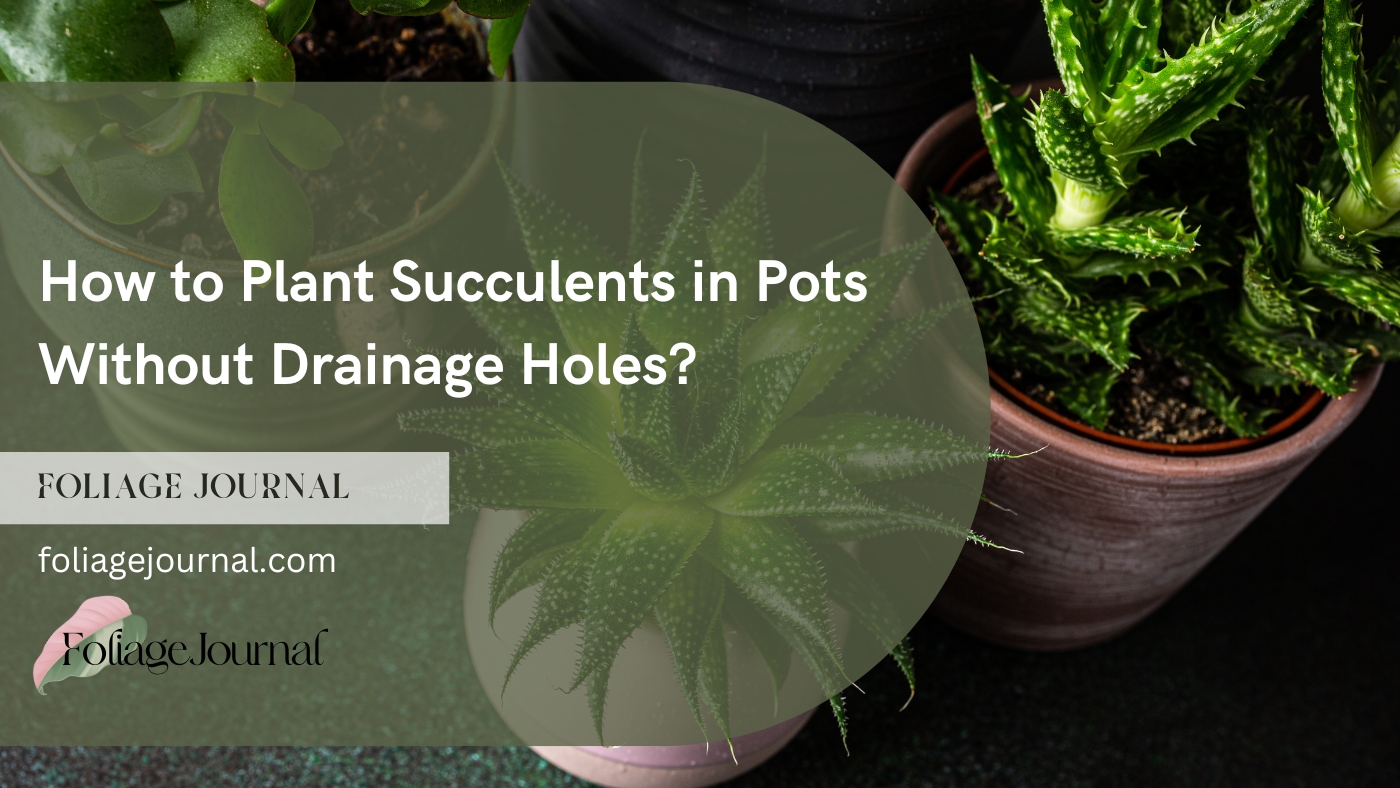Succulents have taken the world by storm! These charming, low-maintenance plants are perfect for adding a touch of greenery to your home or office. But here’s the catch: succulents need proper planting techniques to thrive, especially when it comes to drainage. So, what do you do when you have a gorgeous pot without drainage holes? and how to plant succulents in pots without drainage holes?
Don’t worry, we’ve got you covered!
In this comprehensive guide, we’ll walk you through the process of planting succulents in pots without drainage holes, ensuring your beloved plants stay healthy and happy.
Understanding Succulents
Before we dive into the planting process, let’s take a moment to understand what succulents are and why they’re so popular.
Succulents are plants that store water in their leaves, stems, or roots, making them drought-resistant and ideal for forgetful plant parents. Some common types of succulents include:
- Echeveria
- Aloe vera
- Jade plant
- Burro’s tail
- Haworthia
These plants come in a variety of shapes, sizes, and colors, making them an attractive addition to any space. Plus, they’re relatively easy to care for, making them perfect for beginners!
Choosing the Right Pot for Succulents
When it comes to planting succulents, selecting the right pot is crucial. You can choose from a variety of materials, such as ceramic, plastic, or glass.
However, keep in mind that the size of the pot should be proportional to the size of your succulent.
A pot that’s too large can retain excess moisture, leading to root rot, while a pot that’s too small can restrict growth.
Now, let’s address the elephant in the room: drainage holes. Ideally, pots for succulents should have drainage holes to allow excess water to escape.
But what if you’ve fallen in love with a pot that doesn’t have any holes? Don’t fret; there are ways to work around this issue!
Preparing Pots Without Drainage Holes
Drainage holes are important for succulents because they allow excess water to drain away from the roots, preventing root rot.
However, if your pot doesn’t have drainage holes, there are a few alternatives you can try:
- Adding a Layer of Rocks or Pebbles: Place a layer of rocks or pebbles at the bottom of your pot before adding soil. This creates a space for excess water to collect, away from your succulent’s roots.
- Using Activated Charcoal: Activated charcoal is a porous material that helps absorb excess moisture. Place a layer of activated charcoal at the bottom of your pot before adding soil.
- Creating a “False Drainage” System: Drill a small hole in the bottom of a plastic pot and place it inside your decorative pot. This allows excess water to drain into the plastic pot, which you can easily remove and empty.
Regardless of which method you choose, it’s crucial to use well-draining soil specifically formulated for succulents. This type of soil is designed to retain just the right amount of moisture while allowing excess water to drain away.
Step-by-Step Guide: How to Plant Succulents in Pots Without Drainage Holes?
Now that you’ve chosen your pot and prepared it for planting, it’s time to get your hands dirty! Here’s a step-by-step guide on how to plant succulents in pots without drainage holes:
Gathering Materials
Before you begin, make sure you have the following materials:
- Your succulent plant
- A pot without drainage holes
- Well-draining succulent soil
- Rocks, pebbles, or activated charcoal
- Gloves (optional)
Preparing the Pot
- Clean your pot thoroughly to remove any dirt or debris.
- Add a layer of rocks, pebbles, or activated charcoal to the bottom of the pot. This layer should be about 1-2 inches deep.
Planting the Succulent
- Gently remove your succulent from its original container.
- Loosen and remove any old soil from the roots.
- Place your succulent in the prepared pot, ensuring it’s centered.
- Fill in around the succulent with well-draining soil, leaving about a half-inch of space at the top of the pot.
- Gently press the soil around the succulent to secure it in place.
Watering and Aftercare
- After planting, give your succulent a thorough initial watering.
- Wait until the soil is completely dry before watering again. This can take anywhere from 1-3 weeks, depending on the type of succulent and the environment.
- Watch for signs of overwatering, such as yellowing or mushy leaves, and adjust your watering frequency accordingly.
- Provide your succulent with adequate light. Most succulents prefer bright, indirect light, but some can tolerate direct sunlight.
Common Mistakes to Avoid When Planting Succulents in Pots Without Drainage
While planting succulents in pots without drainage holes is possible, there are a few common mistakes you’ll want to avoid:
- Using Regular Potting Soil: Regular potting soil retains too much moisture for succulents. Always use well-draining soil specifically formulated for succulents.
- Overwatering: Succulents are drought-resistant plants, so they don’t need frequent watering. Overwatering can lead to root rot and other issues.
- Placing Succulents in Low-Light Areas: Most succulents need bright, indirect light to thrive. Placing them in low-light areas can cause them to become stretched or leggy.
- Neglecting to Check for Signs of Stress or Damage: Regularly inspect your succulents for signs of stress, such as yellowing leaves, mushy stems, or pests. Catching these issues early can help you save your plant.

FAQ
What to Do if Your Succulent Shows Signs of Overwatering
If your succulent shows signs of overwatering, such as yellowing or mushy leaves, it’s important to act quickly. Remove the succulent from its pot and gently remove any wet soil from the roots. Allow the roots to dry out for a few days before replanting in fresh, dry soil. Adjust your watering frequency to ensure you’re not overwatering in the future.
How to Propagate Succulents?
One of the joys of growing succulents is how easy they are to propagate. Many succulents can be propagated from leaf or stem cuttings. Simply remove a leaf or stem from your succulent, allow it to callous over for a few days, and then place it on top of well-draining soil. Mist the soil occasionally, and within a few weeks, you should see new roots and growth.
Dealing with Pests and Diseases
While succulents are relatively low-maintenance, they can still be susceptible to pests and diseases. Common issues include mealybugs, scale, and root rot. If you notice any pests or signs of disease, isolate the affected plant and treat it with a natural or chemical pesticide, depending on the severity of the issue.
Transitioning Succulents from Indoor to Outdoor Settings
If you want to move your indoor succulents outdoors, it’s important to do so gradually to prevent sunburn. Start by placing your succulents in a shaded outdoor area for a few hours a day, gradually increasing their exposure to sunlight over the course of a few weeks.
Conclusion
Planting succulents in pots without drainage holes may seem daunting at first, but with the right preparation and care, it’s entirely possible! By following the steps outlined in this guide, you’ll be able to create a beautiful, thriving succulent display in any pot you choose.
Remember to:
- Choose the right pot and well-draining soil
- Prepare your pot with a layer of rocks, pebbles, or activated charcoal
- Plant your succulent carefully and water it thoroughly
- Provide adequate light and avoid overwatering
- Watch for signs of stress or damage and address issues promptly
With a little patience and care, your succulents will flourish, adding a touch of natural beauty to your space. Happy planting!
For more information on succulent care and maintenance, check out these helpful resources:

